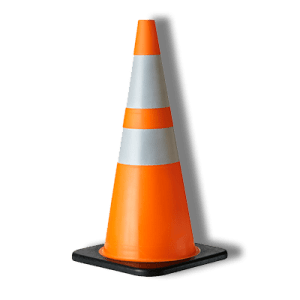
Overview
How do we spot dangerous situations around power lines? Let’s chant or sing Down. Danger. Dial. to learn how to recognize a dangerous situation with power lines and what to do to stay safe.
Instructions
What you'll need
- "Safety sing-along" slideshow
- Pull up the “Safety sing-along” slideshow to introduce students to electricity and power lines.
- Slide 2 shows an example of electricity. Ask students to share how we use electricity in our lives like lights, cell phones, TVs, microwaves and washing machines.
- At slide 3, have students share if they have seen these, if they know what they are and why we have them. Explain that they are power lines, which bring electricity into our homes and schools. Explain that the power lines in this picture are safe. We can safely walk under them, but we must not touch them, and we are going to learn the safety rules about power lines.
- At slide 4, explain to students that the following pictures show unsafe situations with power lines. Ask them to raise their hands if they can spot the danger. Slides 5 to 10 are all examples of unsafe power lines. After each slide, discuss what the danger is and that we must stay away from power lines like these.
- At Slide 11, introduce students to the phrase “Down. Danger. Dial.” If a power line is DOWN, it’s a DANGER, so you must stay away and DIAL 911.
- At slide 12, tell students we will chant and clap to remember “Down. Danger. Dial." First, practice the chorus chant, “Down. Danger. Dial.” clapping at each syllable.
- At slide 13, chant or sing the verse “if a power line is down” with a tune like “If you're happy and you know it clap your hands”. Repeat asking the students to chant or sing with you, then move to the next slide to chant and clap the chorus “Down. Danger. Dial.” Continue through the verses and chorus till slide 16. Consider asking students to do actions with each of the four verses. For example:
- "Power line's on the ground" could have them lie down
- "Electricity is all around" could have them twirl
- "Line is hanging loose" could have them bend forward and hang their body loosely, swaying their arms
- "Loosing all it's juice" could have them wiggle their arms out front like electrons escaping the wire
- "Pole leans too far" could have them lean as far as they can in one direction
- "Bending like a star" could have them do a star jump
- "Tree falls on the line" they could mimic a tree falling
- "Unsafe and we're not fine" they could make a big X motion with their arms in front of their body
- Finish by asking students to share some safe and unsafe situations with power lines from the slide show pictures.
Modify or extend this activity
Extension
- Pull up the “Safety shuffle” activity to learn how to shuffle away in dangerous situations involving power lines.
Curriculum Fit
Grade K, 1 Physical and Health Education
Content
- Hazards and potentially unsafe situations
Curricular competencies
Social and community health
- Identify and describe a variety of unsafe and/or uncomfortable situations
Grade K, 1 Arts Education
Big ideas
- Dance, drama, music, and visual arts express meaning in unique ways
Content
- Elements in the arts, including but not limited to:
- music: beat/pulse, rhythm, tempo, pitch, dynamics (music), form (music)
Curricular competencies
Exploring and creating
- Explore elements, processes, materials, movements, technologies, tools, and techniques of the arts
Grade K, 1 English Language Arts
Big ideas
- Stories and other texts can be shared through pictures and words.
Curricular competencies
Comprehend and connect
- Use sources of information and prior knowledge to make meaning
- Use developmentally appropriate reading, listening and viewing to make meaning
Assessments
- Assess students’ ability to identify safe and dangerous situations around power lines.
- Assess students’ knowledge of Down. Danger. Dial. and to call 911 if they see a fallen or damaged power line.
- Assess students’ participation in the chanting or singing game.
Teaching Notes
Electrical safety tips around power lines
- Don't climb on power poles
- Never fly kites near power lines
- Stay away from broken or fallen power lines
- Never touch or climb trees that are near power lines
- Never touch big, metal transformer boxes with warning signs
- Obey warning signs
- Stay away from substations and power lines
Electrical safety, electricity and power lines
Power lines are conductive meaning the electrical current runs through them with the least resistance. However if something makes contact with a live power line like a tree, kite, or ladder, the electrical current may flow to the ground. The place where the current touches the ground is the highest voltage and from that point the electrical current spreads out in irregular concentric circles. The voltage or electrical intensity decreases as it moves further from the source. A safe distance from the source of contact, like a downed power line, is 10 metres or more.
Electricity has the ability to find its way through touch to get to the ground. If a kite gets tangled in a power line, the electrical current could travel through the kite and you to reach the ground. Birds do not get zapped when standing on a power line, however they would if they straddled two power lines, or touch their beak to the ground while standing on the power line.
If there is a power line on the ground, you need to move away from the source (where it touches the ground). However electricity has the ability to move through your body as you step away from the source of electricity. As electrical current flows through the ground the voltage decreases in concentric rings or ripples as you move further from the source. So, if you move away by lifting one foot, the change in voltage between the concentric rings can travel up one leg and down the other. Instead by keeping your legs together and shuffling your feet, the electrical current will stay in the ground. 10 metres is the safe distance calculated based on the voltage in the power lines here in B.C.







